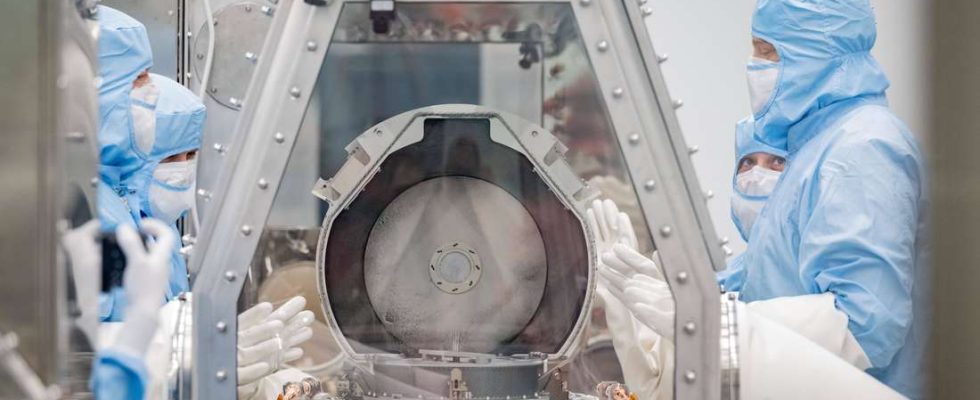A NASA mission has brought asteroid rock samples to Earth. The capsule couldn’t be opened for months. Now the researchers have made a breakthrough.
Houston – For the NASA “Osiris-Rex” mission, a space probe traveled for seven years to collect rock samples from an asteroid. Material from the asteroid “Bennu” was brought to Earth. The samples were dropped in a capsule over the desert in the US state of Utah in September. They are now being analyzed by researchers around the world – including in Frankfurt. But not all samples have been taken from the capsule so far.
Asteroid material is removed from the capsule – more than expected
Overall, more rock and dust was released Asteroids collected than the planned goal of 60 grams, reports the NASA on their Blog. Material was found not only in the sample container itself, but also on the outside of the container. This was also collected and is now being examined. Most of the material is in the sample head, which must first be opened.
The probe is opened in a specialized glovebox in which a stream of nitrogen prevents the samples from coming into contact with the Earth’s atmosphere. In this way the condition of the material can be maintained for the following investigations.
Space probe cannot be opened – researchers are faced with a problem
After several attempts to remove the material from the probe head, it was determined that two of the 35 caps on the capsule could not be opened with the tools currently approved for the glovebox. Depending on the size, the first parts of the material could be removed using tweezers and shovels. A total of 70.3 grams of material has already been collected.
The team at NASA’s Johnson Space Center in Houston is working hard on a new approach to collect the rest of the samples. The difficulty lies not only in developing instruments that would not damage the collected material, but also could operate in the limited space of the glovebox.
New tools developed to open space probe
“Our engineers and scientists have worked hard behind the scenes for months to design, develop and test new tools that have helped us overcome this hurdle,” said Eileen Stansberry, head of Astromaterials Research and Exploration Science, about the new developments.
Thanks to the new tools, the two remaining closures could now be removed after months of waiting. Finally, the so-called “Touch-and-Go Sample Acquisition Mechanism”, which makes up the head of the probe, can be taken apart. Now it will become clear how much material the probe brought back on its mission.

